About MIJ 1985-1986 serial numbers: 1985 & 1986 Fender serial numbers can be quite perplexing, even for Fender themselves. Fender apparantly created a very large batch of serial numbered bridge plates for productions starting in 1985, to serve as serial numbers; Those plates' serial numbers began with the letter "A" followed by six numbers. But the plates were not used in sequence, as though they were put in a bin like other parts and taken out without regard to serial sequence. In 1987 Fender decided to start putting serial numbers on the back of the neck heel, right under "Made In Japan". There were many serialed bridge plates left over that Fender MIJ continued to use; Some right up into the 1990's (I've seen a 1996)! SO, if a MIJ Fender has a serial number on the back of the neck heel, then the serial number on a bridge plate is not valid but the neck heel serial number is. BUT, if there is no serial number on the neck heel, then the serial number on the bridge plate IS the guitar's serial number. Contrary to allot of amateur opinions, the bridge plate serial numbers are NOT patent numbers; The patent was pending, thus no patent number. This Tele's bridge plate serial IS the serial number, and signifies that this Tele is 1985 or 1986; Witnessed by no serial number on the neck heel; Further witnessed by no "F" on the neck plate, and "Made In Japan" (not "Crafted In Japan" which was begun in 1997). |
ll Page 1 ll Page 2 ll |
Fender Telecaster MIJ Pink Paisley Page 2 Old Trusty Road Warrior 1985 (possibly 1986) (see notes below) These pages are heavy with high resolution images. Please allow full loading. |
ll Page 1 ll Page 2 ll |

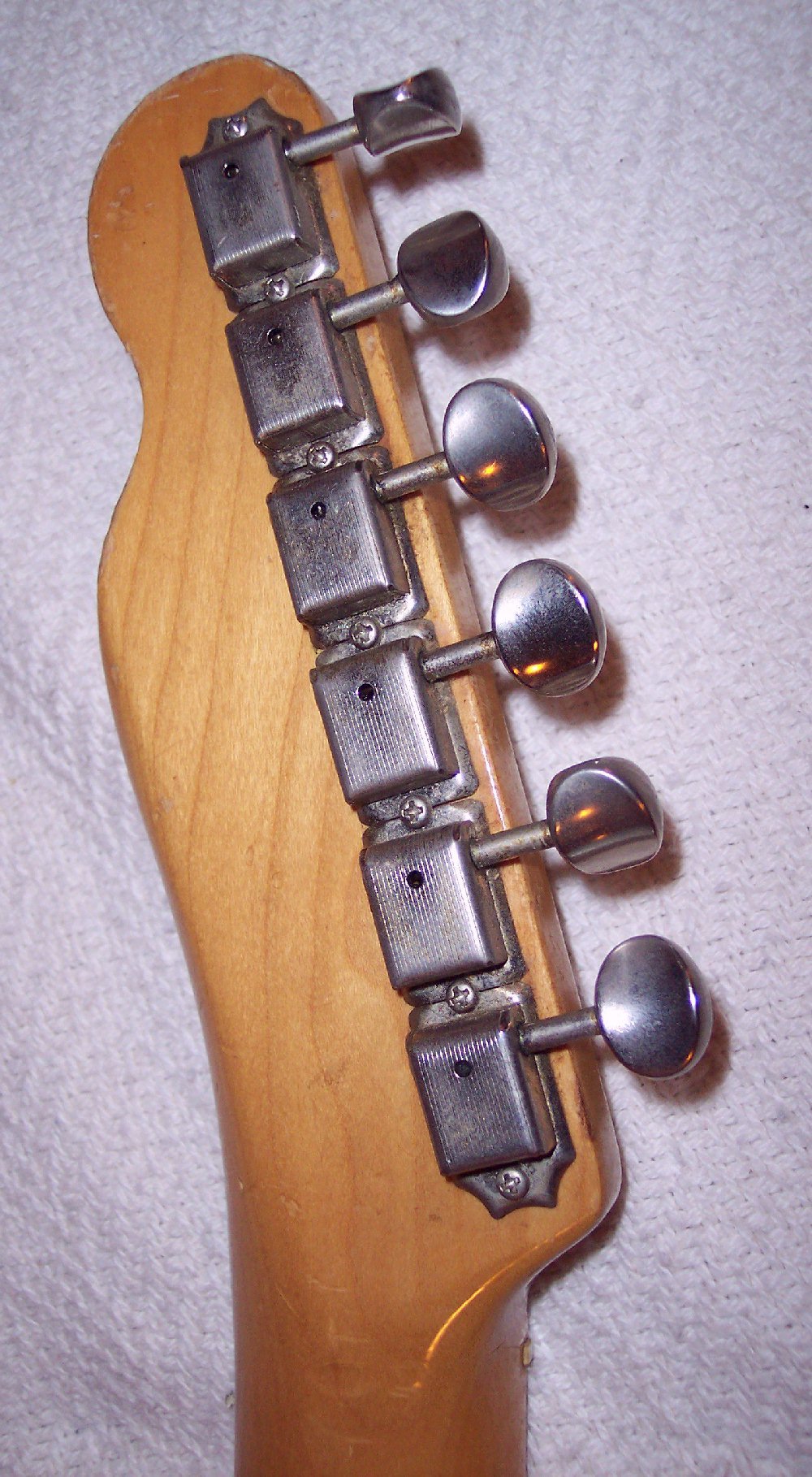
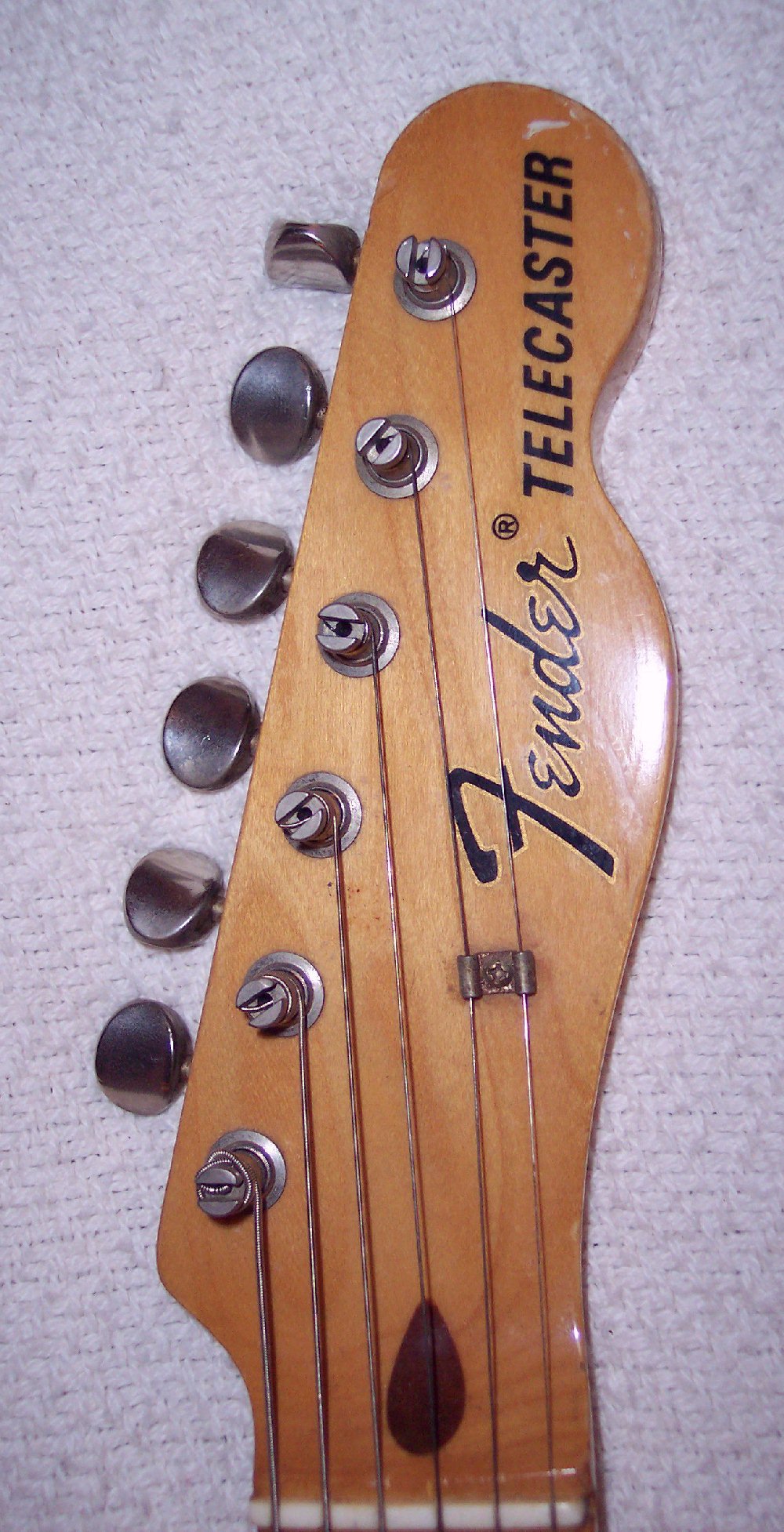
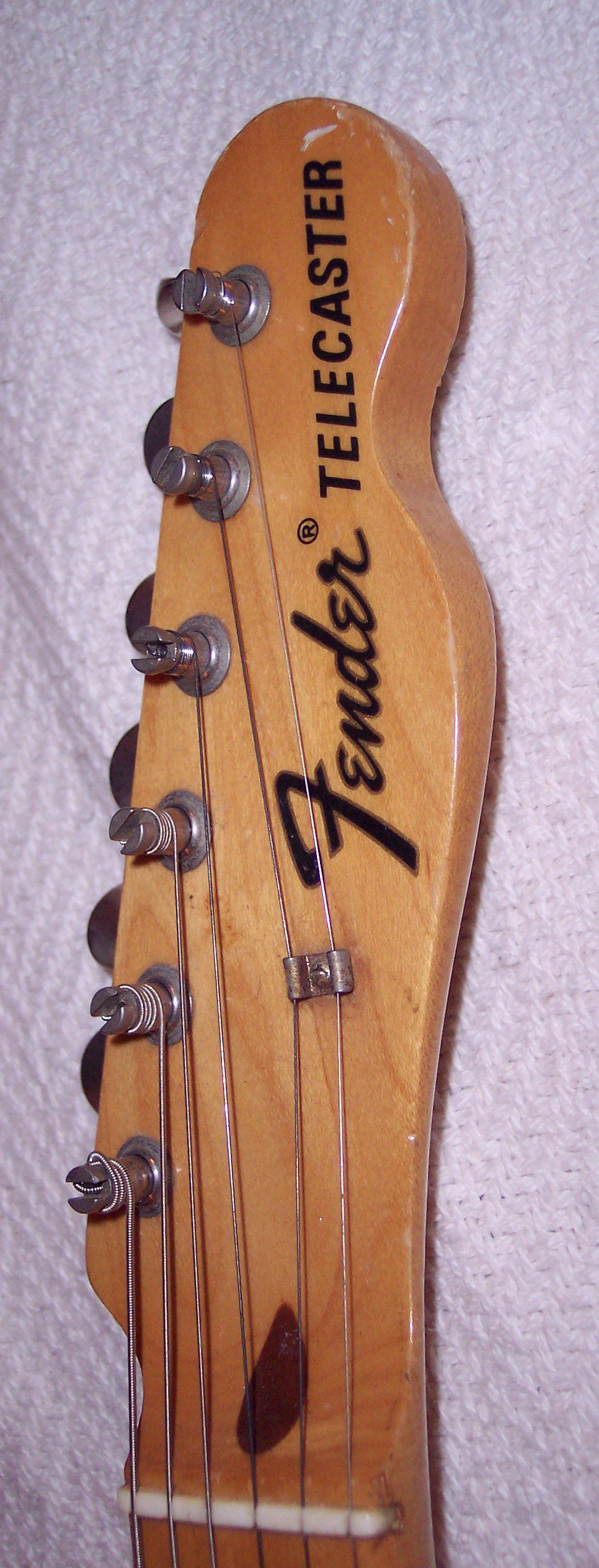
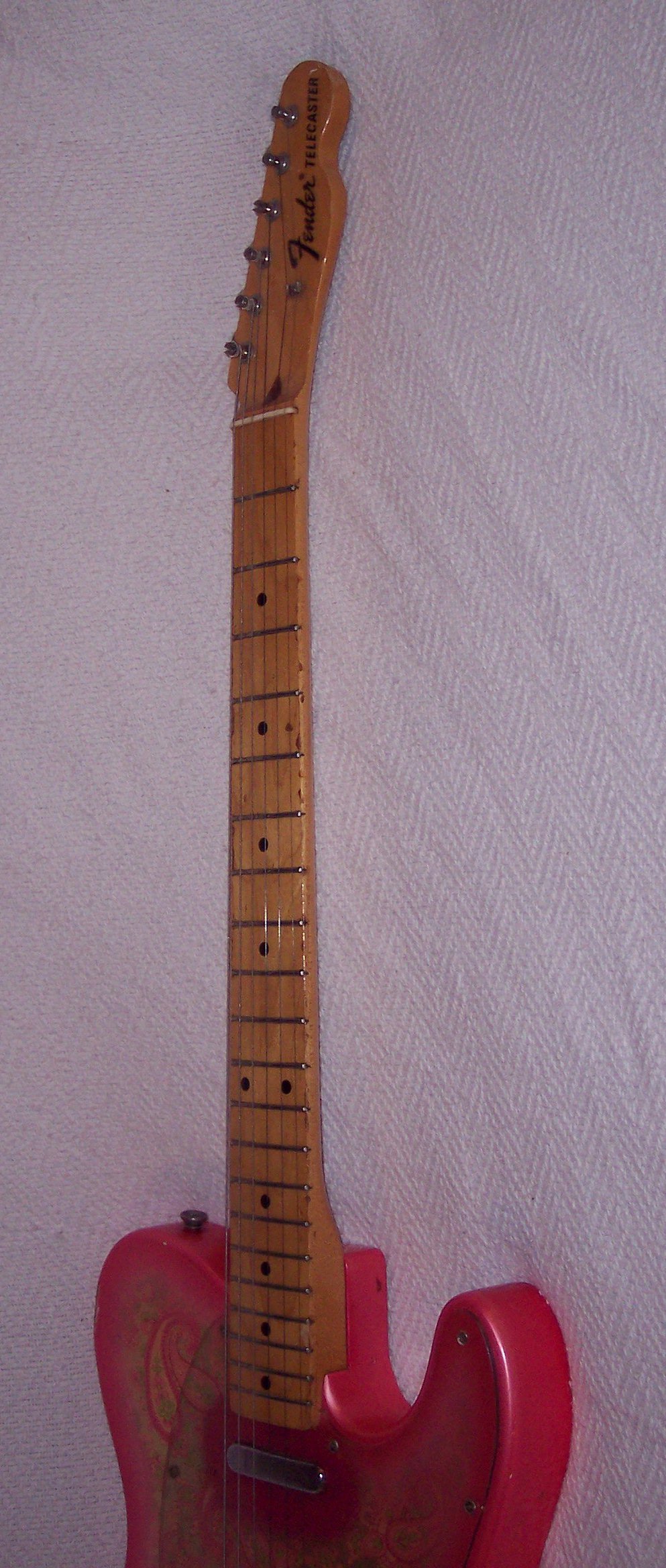

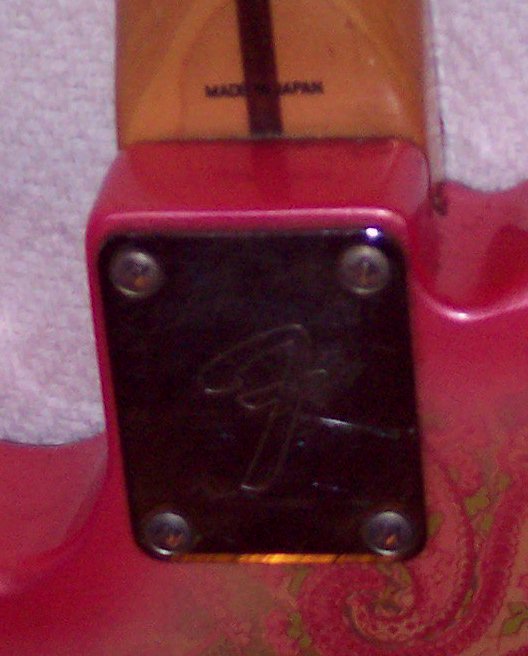
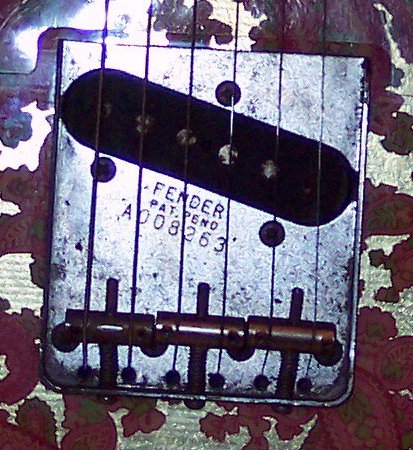
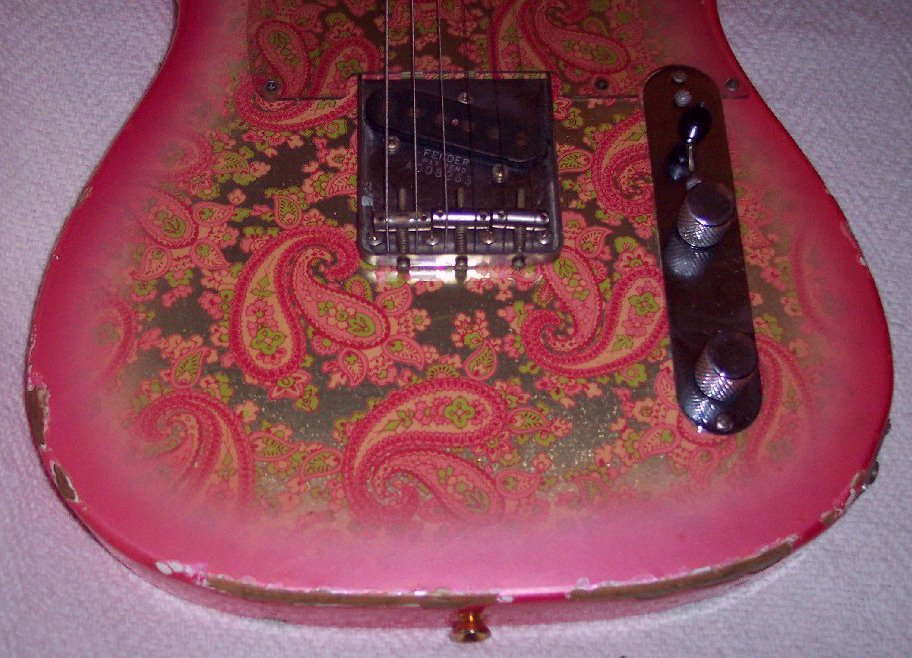
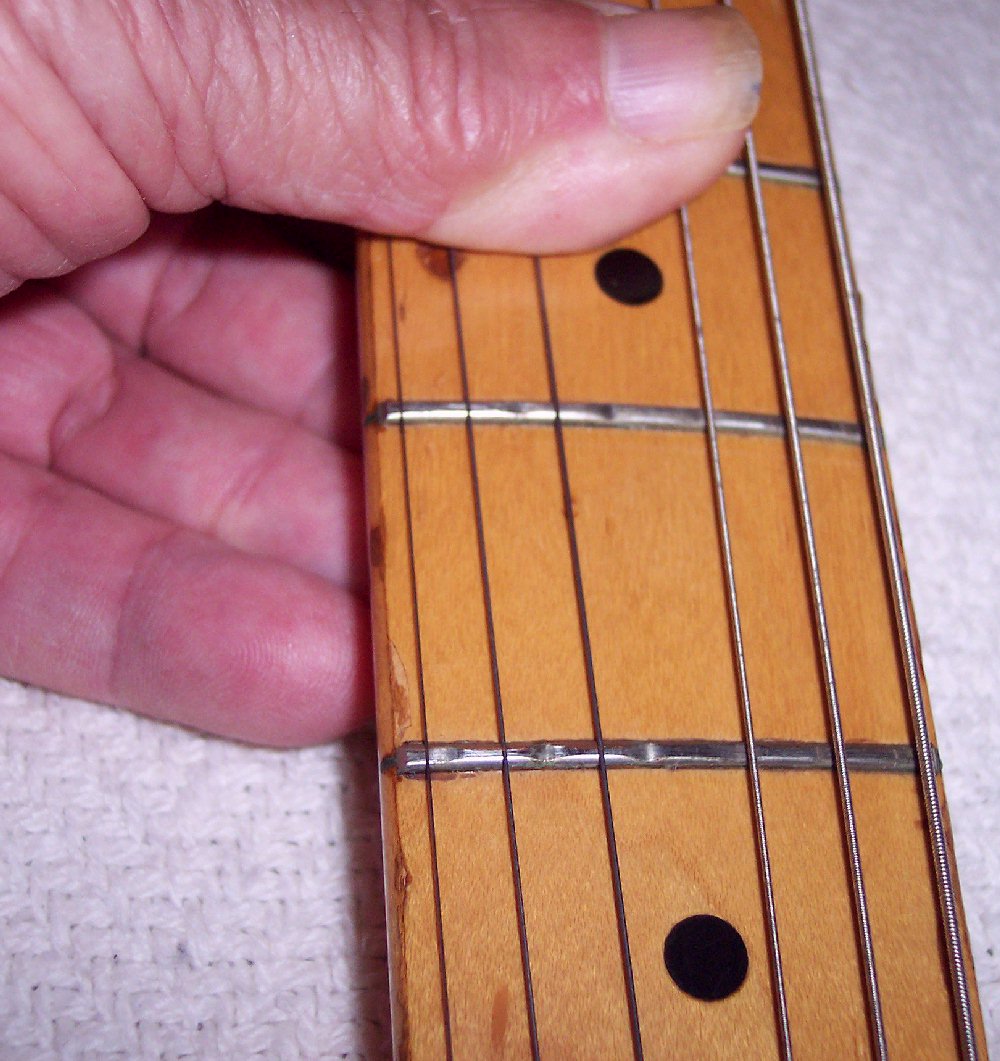

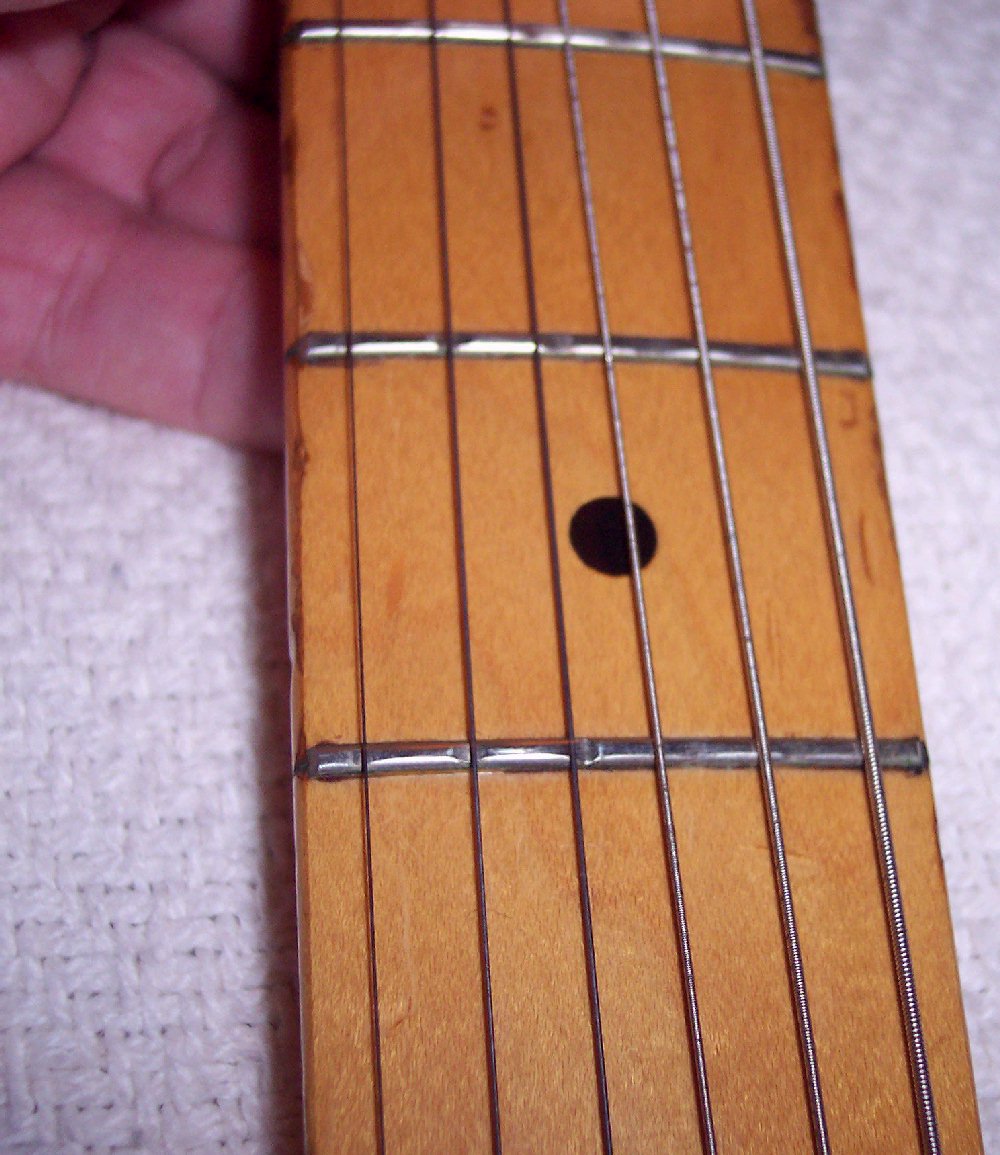

The camera flash is turned off to get good contrast on the bridge plate serial number. The flash off makes the bridge plate's corrosion look much worse than it actually is. Cross reference other pics that have the camera flash on. |
About MIJ 1985-1986 serial numbers: 1985 & 1986 Fender serial numbers can be quite perplexing, even for Fender themselves. Fender apparantly created a very large batch of serial numbered bridge plates for productions starting in 1985, to serve as serial numbers; Those plates' serial numbers began with the letter "A" followed by six numbers. But the plates were not used in sequence, as though they were put in a bin like other parts and taken out without regard to serial sequence. In 1987 Fender decided to start putting serial numbers on the back of the neck heel, right under "Made In Japan". There were many serialed bridge plates left over that Fender MIJ continued to use; Some right up into the 1990's (I've seen a 1996)! SO, if a MIJ Fender has a serial number on the back of the neck heel, then the serial number on a bridge plate is not valid but the neck heel serial number is. BUT, if there is no serial number on the neck heel, then the serial number on the bridge plate IS the guitar's serial number. Contrary to allot of amateur opinions, the bridge plate serial numbers are NOT patent numbers; The patent was pending, thus no patent number. This Tele's bridge plate serial IS the serial number, and signifies that this Tele is 1985 or 1986; Witnessed by no serial number on the neck heel; Further witnessed by no "F" on the neck plate, and "Made In Japan" (not "Crafted In Japan" which was begun in 1997). |
DATING THIS TELE: ------- See the sequence of images and info below ------- Notice the "Made In Japan", ...and not "Crafted In Japan" introduced in 1997. Also notice no serial number under "Made In Japan". |
Here is another close look at the jewelry rash on this Tele. I'm pretty good at reading a guitar's history. "Reading" the locations and nature of this Tele's finish rash, I am almost certain that the rash came from Heavy Metal jewelry worn by a rather animated Player who, by also reading the fret wear, evidently depended upon his / her animation more than his / her playing ability ! He / she depended heavily upon hammer-on tricks and twiddle-dee-dees on the 2nd and 3rd strings at the 2nd, 3rd and 4th frets, as you will see in the next images; And most of their playing was on the first 3 strings, decreasing up the neck, rather than the lower strings where vibrato and string bends usually eat frets up but didn't on this Tele: |
Maybe the Drummer was doing the hammer-ons with drum sticks ! |
An even closer look: |
.....While the 3 bass strings have hardly any abnormal wear (but some dielectric stain from sweat). |
AMAZINGLY, this Tele still plays quite well ! ....even with medium-light strings and action set a bit lower than median. Any lower and string buzz starts on the 3rd string below the 4th fret. |
This Tele got hot sometime in it's past, softened the nut glue and the bass-ward string pressure pulled the nut bassward; A good indicator of where nuetral latteral string tension is on the nut ! |
< |
> |
3rd Fret |
4th Fret |
I got to do a wipe-down clean-up before I shipped this Tele but didn't get to do a detailed clean-up. I would have liked to and enjoyed doing a detailed clean-up beforehand, ...but some collectors and brokers would freak if you cleaned up their "patina". The purchaser's rush order prevented a detailed clean-up. Hopefully he'll enjoy doing a detailed clean-up as much as I would have. ~~~~~~~ These tuners will clean up just fine; Marks on them in these pics are almost entirely old body grime. |